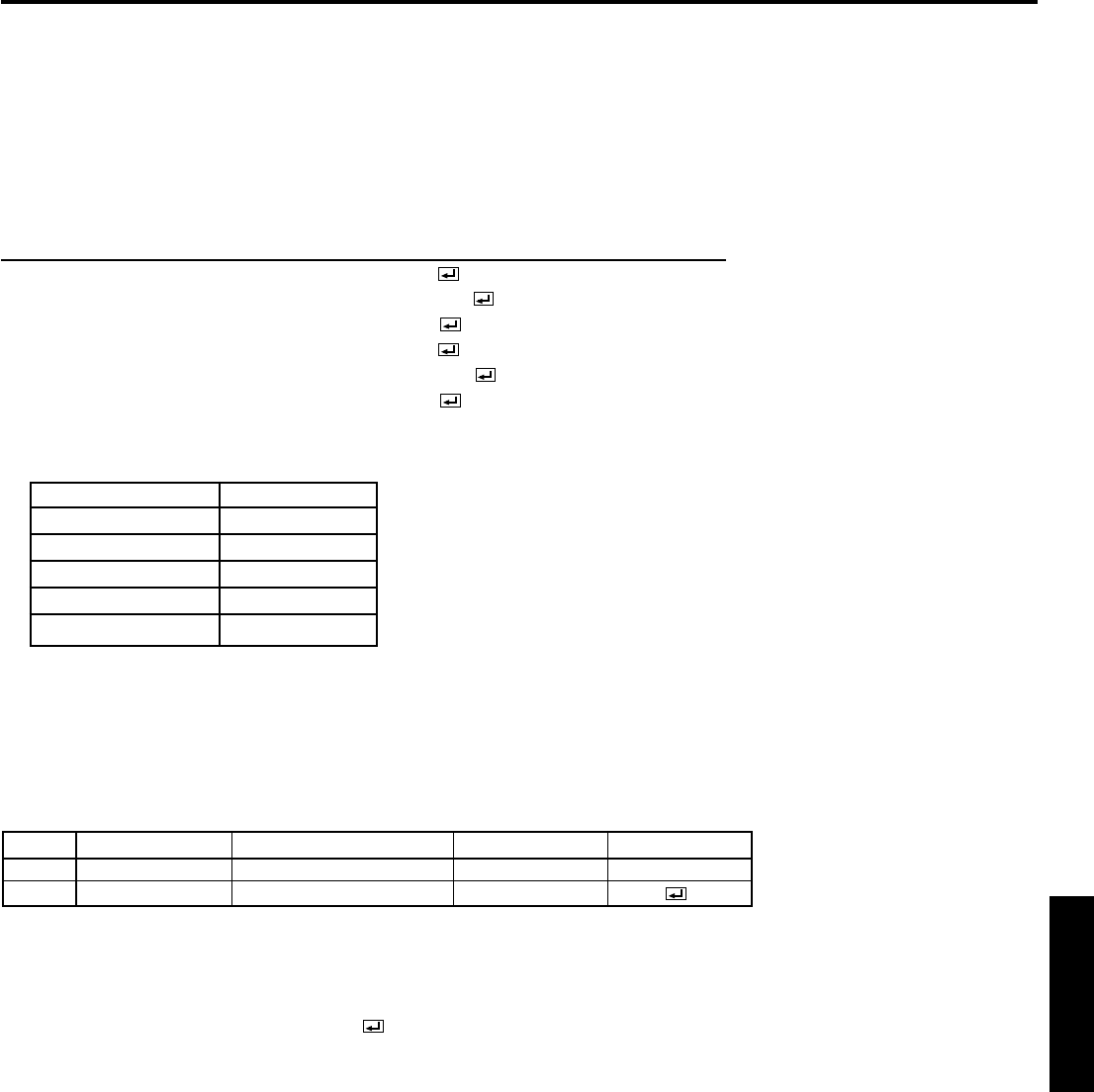
APPENDIX
Functions can be controlled by a personal computer:
• Turn the ON or OFF
• Changing input signals
• Button input by remote control
• Reading warning data
• Picture adjustment
By making a programme, you can also control this projector by a personal computer automatically.
[EXAMPLE]
Time Movement
Commands to be used (ASCII code)
8:40 a.m. Turn the power ON 0 0 !
Change input to RGB 0 0 _ r 1
0:20 p.m. Turn the power OFF 0 0 "
1:00 p.m. Turn the power ON 0 0 !
3:00 p.m. Change input to VIDEO 0 0 _ v 1
5:20 p.m. Turn the power OFF 0 0 "
1) Interface
Address code Function code Data code End code
HEX 30h 30h Function Data 0Dh
ASCII '0' '0' Function Data
[Address code] 30h 30h (In ASCII code, '0' '0') fixed.
[Function code] A code of each fixed control move
[Data code] A code of each fixed control data (number) and not always indicated.
[End code] 0Dh (In ASCII code, ' ') fixed.
3) Control sequence
(1) The command from a personal computer to the projector will be sent in 400ms.
(2) The projector will send a return command 400ms* after it has received an encode. if the command isn’t
received correctly, the projector will not send the retirn command.
(3) The personal computer checks the command and confirms that if the command which has been sent has
been executed or not.
(4) This projector sends various codes, other than the return code. When having a control sequence by RS-
232C, reject other codes from personal computer side.
• * : The sending time of return command may delay depending on the condition (during changing the input
signal, playing back the PC card, etc.).
PROTOCOL RS-232C
BAUD RATE 9600 [bps]
DATA LENGTH 8 [bits]
PARITY BIT NONE
STOP BIT 1 [bits]
FLOW CONTROL NONE
This projector uses RXD, TXD and GND lines for RS-232C control.
For RS-232C cable,the reverse type cable should be used.
2) Control command diagram
The command is structured by the address code, function code, data code and end code. The length of the
command is different by each function.


















